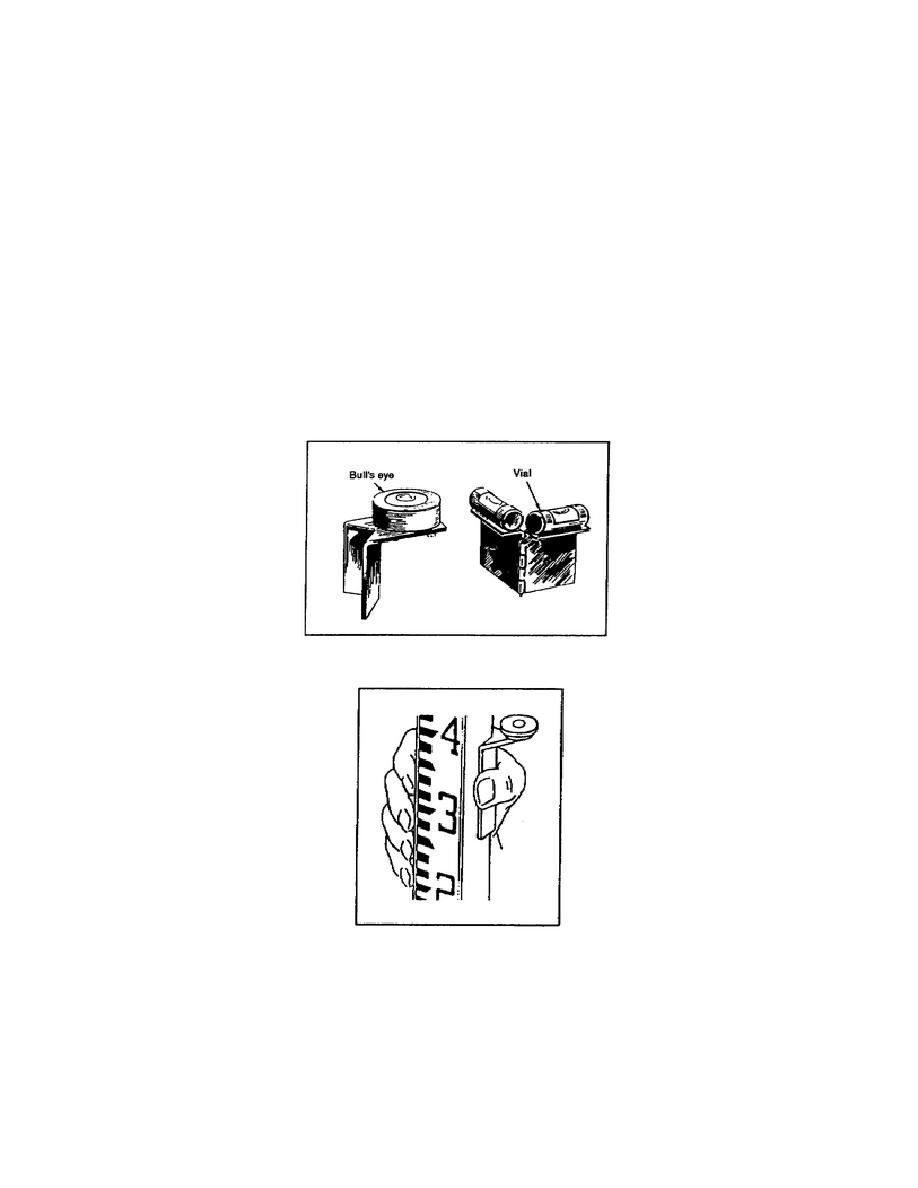
(3) Care. Proper care should be taken of the leveling rods, such as keeping them clean (free
of sand and dirt), straight, and readable. Leveling rods must be carried over the shoulder or under the
arm from point to point. They must be collapsed in their original configuration when carrying them over
long distances or when transporting them. Dragging them through the brush or along the ground will
wear away or chip the paint. Do not set the rod with the numbers face down, as this will wear off the
painted numbers. When not in use, the leveling rods should be stored in their cases, when available, to
prevent warping. The cases are generally designed to support the rods either flat or on their sides. The
rods should not to be leaned against a wall or placed on the damp ground for any extended period, since
this can produce a curvature in the rods and result in leveling errors.
i. Rod Levels. When a rod reading is made, it is accurate only if the rod is perfectly plumbed.
If the rod is out of plumb, the reading will be greater than the actual vertical distance between the HI and
the base of the rod. Therefore, to ensure a truly plumbed leveling rod, a rod level should be used. The
two types of rod levels that are generally used with standard leveling rods are shown in Figure 5-20.
The one on the left is called the bull's-eye level, and the one on the right is the vial level. Figure 5-21
shows the proper way of attaching the bull's-eye level; the vial level is attached in the same manner.
Figure 5-20. Rod levels
Figure 5-21. Proper attachment of rod level
EN0591
5-18


 Previous Page
Previous Page
